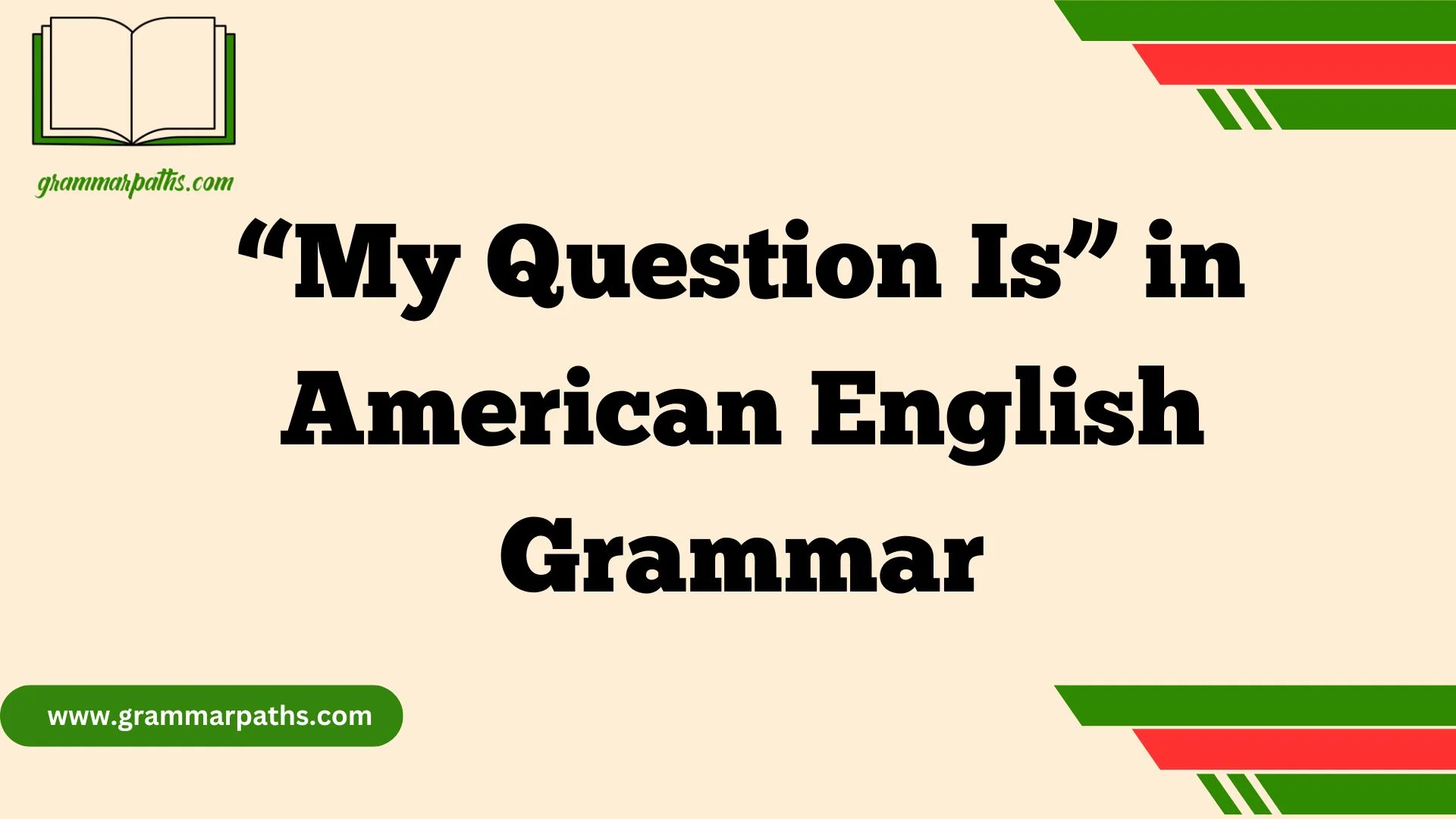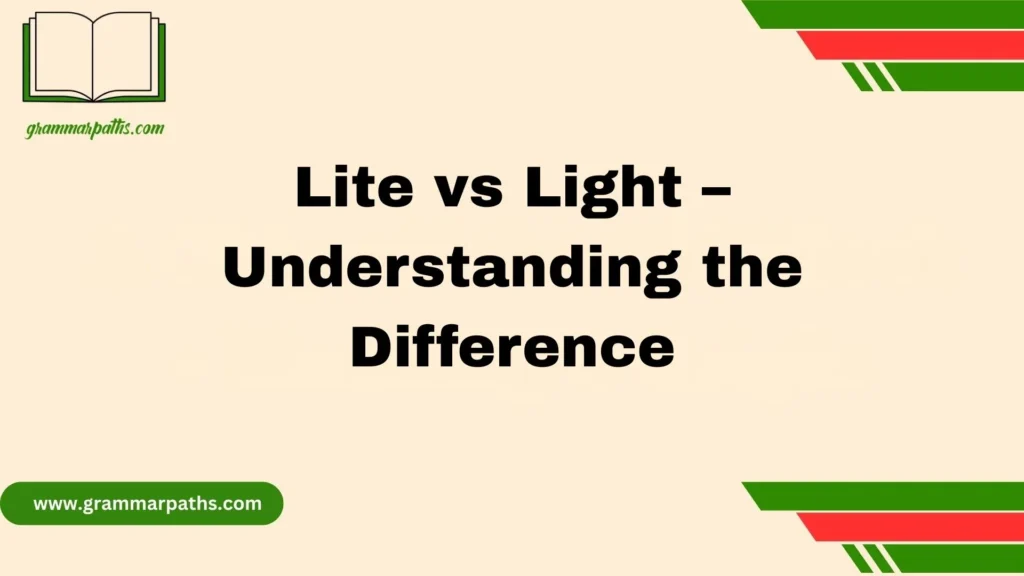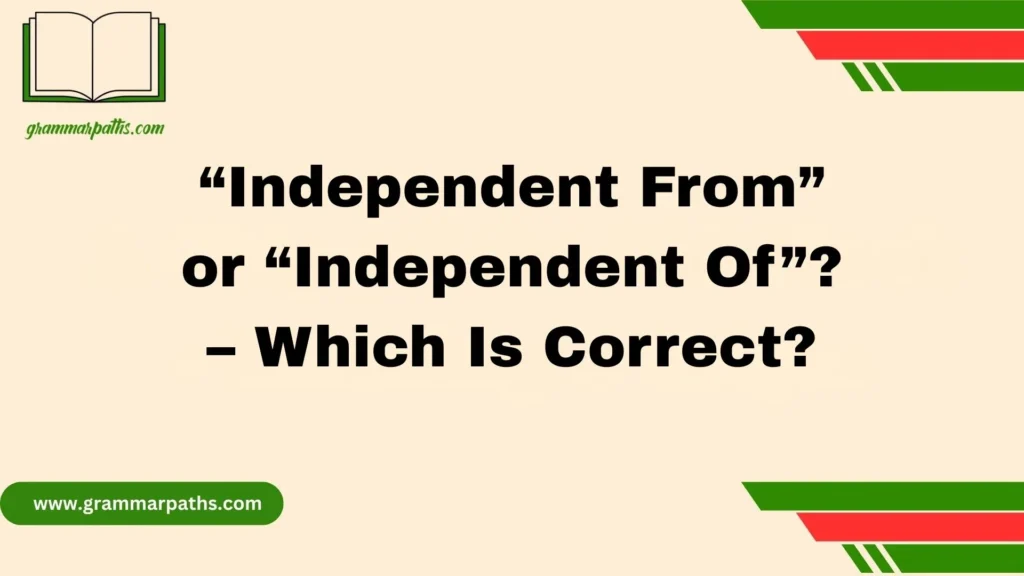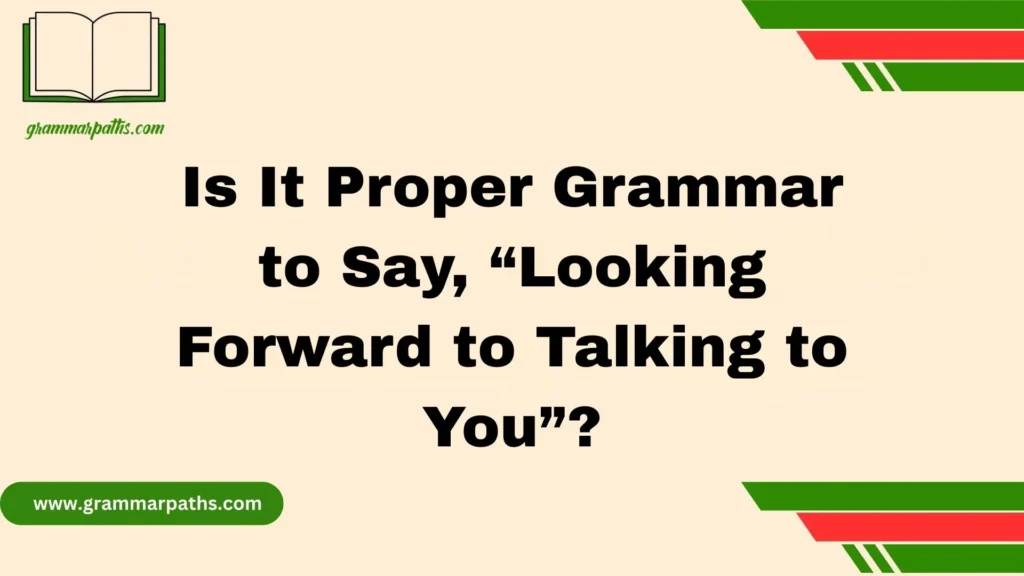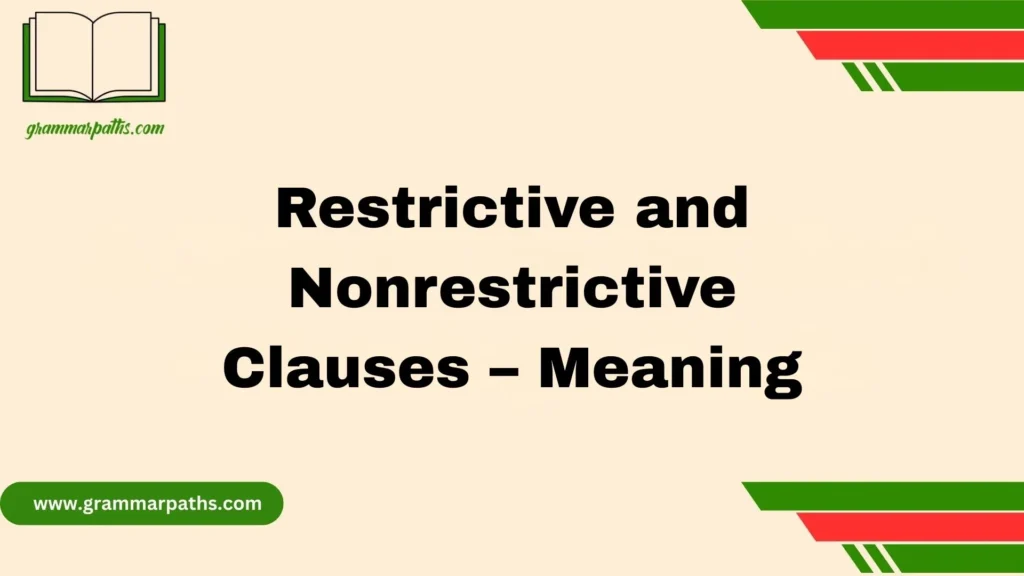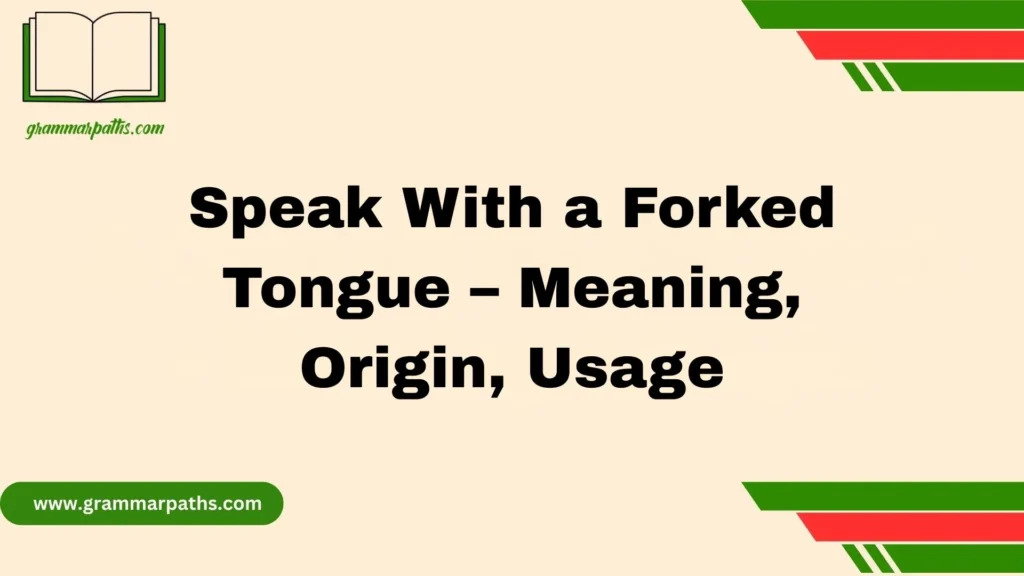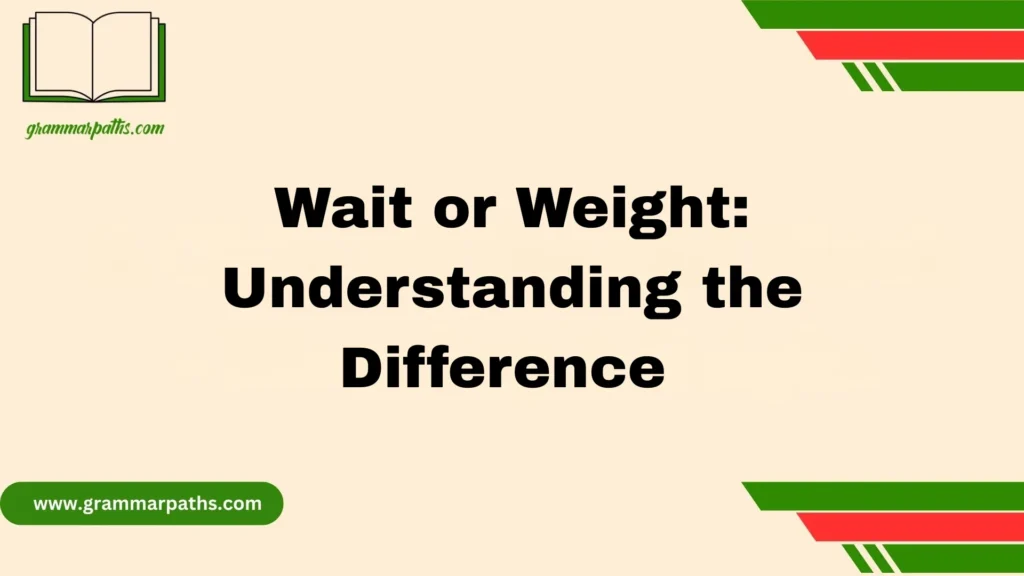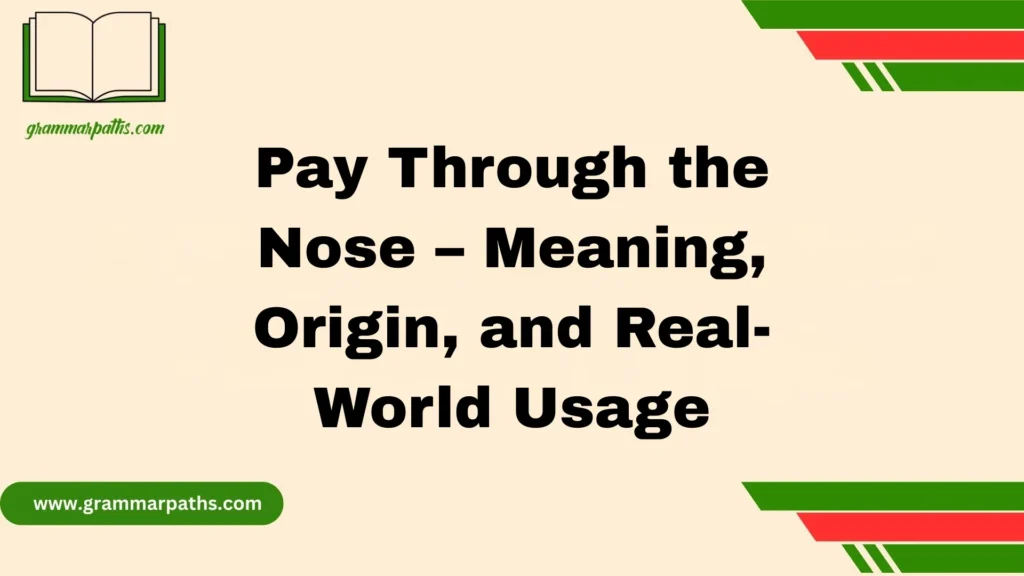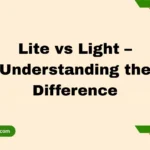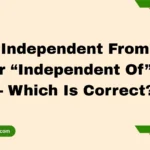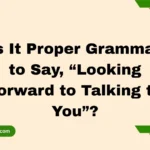Speaking clearly and politely in English often comes down to using the right little phrases – and one of the most useful is “My question is.” It may seem simple, but this phrase can start conversations, clear up confusion, or steer things in the right direction – if you use it correctly.
Whether you’re writing a formal email, asking something in a meeting, or just having a casual chat, knowing the right grammar, punctuation, and tone behind “My question is” can make a big difference.
In this guide, we’ll break it all down. You’ll learn how to punctuate it properly, avoid the most common mistakes, and use it in a variety of real-life situations. We’ll also explore some better alternatives that can make you sound even more natural and confident.
By the end, you’ll be able to use “My question is” with ease—making your questions clear, your tone respectful, and your overall communication much more effective.
Why the Phrase “My Question Is” Deserves Attention
You’ve probably heard it countless times:
“My question is, what happens next?”
“My question is: why did they cancel the meeting?”
While common, these constructions often get misused. Understanding how to correctly punctuate and frame this phrase impacts:
- Clarity – Your message lands the way you intended.
- Tone – You come across as either assertive, polite, or aggressive.
- Professionalism – Especially critical in formal communication.
As grammar lovers and effective communicators know, it’s not just what you say—it’s how you say it.
What Does “My Question Is” Actually Mean in Grammar?
At its core, “my question is” introduces a noun clause, which serves as the subject complement in a sentence.
Grammatically speaking:
- “My question” is a subject.
- “Is” functions as a linking verb.
- What follows—whether a full sentence or a dependent clause—clarifies the content of the question.
Example:
My question is whether the contract is still valid.
In this case, the phrase acts as a lead-in to a more specific inquiry.
Should You Always Use “Is” After “My Question”?
When “Is” Is Necessary
When the sentence is complete and formal, or when you’re using the phrase in written communication, include “is.”
Correct:
- My question is: What steps should we take next?
- My question is whether the file has been submitted.
“Is” functions like an equals sign, helping connect the noun to its explanation.
When You Can Drop “Is”
In informal speech or quick communication, it’s often dropped for brevity.
Example (text message or casual speech):
My question—why didn’t you call me back?
Avoiding Redundancy
Watch out for clunky double verbs:
Incorrect:
My question is is the project approved?
Fix:
My question is: Is the project approved?
Or better yet:
Is the project approved?
Punctuation Rules After “My Question Is” – What’s Right?
Punctuation plays a major role in how your message reads. Here’s a guide based on sentence structure:
When to Use a Colon (:)
Use a colon when the phrase introduces a complete sentence (usually a direct question).
Example:
My question is: What are the terms of the agreement?
This is the most formally correct punctuation when the sentence following is independent.
When to Use a Comma (,)
Use a comma if you’re using a softer or embedded structure, typically with an indirect question or when you’re about to list something.
Example:
My question is, why are they avoiding the issue?
This version is conversational and common in spoken English.
When to Use No Punctuation
Skip punctuation when what follows is not a full question but a noun clause or dependent clause.
Examples:
My question is whether we’ll have time to finish.
My question is how we can improve productivity.
Summary Table: Punctuation After “My Question Is”
| Structure | Punctuation | Example |
| Full question (independent clause) | Colon (:) | My question is: What’s the backup plan? |
| Indirect question (embedded) | Comma (,) | My question is, why did it take so long? |
| Noun clause (not a question) | None | My question is whether she will return. |
| Casual or stylized sentence | Em dash / none | My question—how do we fix it? |
Common Grammar Pitfalls and Mistakes
Even native English speakers fall into these traps.
Double “is” Error
My question is is there time left?
Fix: Insert a colon or restructure the sentence.
Redundancy
My question is, is my question valid?
Fix: Remove the unnecessary framing.
Inappropriate Punctuation
Using a comma when a colon is needed, or no punctuation where clarity suffers.
My question is what time is it?
My question is: What time is it?
Commas and Their Impact on Clarity and Meaning
Believe it or not, a single comma can change how your message is received.
How a Comma Changes Emphasis
My question is, why are we late?
My question is why we are late.
The first emphasizes the act of questioning; the second emphasizes the reason itself.
Use Commas to:
- Set off introductory elements
- Soften tone in speech
- Clarify rhythm or pauses in conversation
But avoid overusing them where not needed. Over-punctuation can feel awkward or forced.
Practical Examples of “My Question Is” in Real-World Settings
Casual Conversation
- My question is, who forgot to feed the dog?
- So, my question is: Where’s the pizza?
Professional Communication
- My question is: When will the Q3 results be finalized?
- My question is whether we should reassign the task.
Formal Writing
- My question is: How does the proposed legislation impact local businesses?
- My question is whether the thesis aligns with empirical evidence.
These subtle shifts in formality and tone can define how credible or approachable you sound.
The Politeness Factor – How “My Question Is” Shapes Perception
Sometimes, using this phrase adds a gentle tone to your inquiry. Other times, it sounds demanding or unnecessarily indirect.
When It Adds Politeness
My question is: Could you clarify the schedule?
This version is often better than jumping straight into:
When is the deadline?
When It Sounds Abrasive
My question is, why didn’t you do your job?
The phrase softens the blow, but the tone is still harsh. Use emotional intelligence here.
Adjusting Tone with Punctuation and Phrasing
Use modifiers like:
- just wondering if…
- I’d like to know…
- Could you help clarify…
These often sound more collaborative and less confrontational.
Better Alternatives to “My Question Is” (With Context)
Sometimes it’s better to get straight to the point—or rephrase for clarity.
Direct Alternatives
- What is the main concern?
- Why did this happen?
- Who is responsible?
Polite and Diplomatic Phrases
- May I ask…
- Could you clarify…
- Would you mind explaining…
Participation-Inviting Options
- Let’s explore this further…
- Here’s something I’ve been thinking about…
- Let me pose a question…
These build engagement, especially in group discussions or collaborative environments.
How to Choose the Right Version of “My Question Is” Based on Context
The phrase “My question is…” is a common way to introduce a question, especially when you want to sound clear, respectful, or thoughtful. But depending on who you’re talking to, how formal the situation is, and what tone you want to set, there are different versions you might want to use.
Let’s break it down so you can choose the version that fits your situation perfectly.
1. Standard and Neutral: “My question is…”
Best for: Everyday conversations, emails, interviews, and casual meetings.
This version is clear and direct, which makes it a safe go-to. Use it when you’re:
- Asking something in a respectful tone
- Writing to someone you don’t know well
- Trying to clarify something without sounding too pushy
Example:
“My question is: How does this new policy affect remote workers?”
2. Polite and Formal: “May I ask…” or “I’d like to ask…”
Best for: Professional emails, job interviews, academic or formal settings.
If you’re speaking to someone in a position of authority or trying to show extra respect, these are softer, more polite options.
Examples:
“May I ask what the next steps in the process are?”
“I’d like to ask about the budget for this quarter.”
These options make you sound humble and courteous, which is helpful in more serious or structured settings.
3. Curious and Conversational: “I’m wondering…” or “Just curious…”
Best for: Friendly chats, brainstorming sessions, team meetings.
When you want to keep the tone light and open-ended, these are great choices. They make your question feel more like a thought or a genuine interest, rather than a challenge or demand.
Examples:
“I’m wondering how this new tool compares to what we used before.”
“Just curious—did we ever try this strategy last year?”
4. Focused and Assertive: “Here’s what I need to know…” or “What I want to ask is…”
Best for: Urgent situations, tough negotiations, or high-stakes discussions.
These phrases signal that you’re getting straight to the point and expect a clear answer. Use them when time is short or clarity is key.
Examples:
“Here’s what I need to know: Are we still on track for delivery?”
“What I want to ask is whether we’re sticking to the original plan.”
5. Academic or In-Depth: “This raises a question…” or “That leads me to ask…”
Best for: Research discussions, classroom settings, scholarly writing.
These versions are ideal when your question is part of a deeper analysis or follows a complex idea.
Examples:
“This raises a question about how sustainable the approach really is.”
“That leads me to ask whether user behavior has changed over time.”
Quick Comparison Table
| Tone | Phrase | Best Use |
| Neutral | “My question is…” | Everyday conversations, general clarity |
| Polite/Formal | “May I ask…”/”I’d like to ask…” | Emails, interviews, respectful communication |
| Conversational | “I’m wondering…”/”Just curious…” | Team meetings, relaxed conversations |
| Assertive | “Here’s what I need to know…” | Urgent decisions, direct communication |
| Academic | “This raises a question…” | Research, classrooms, deeper analysis |
Final Tip: Match Your Tone to the Situation
Before choosing which version of “my question is” to use, ask yourself:
- Who am I talking to? (Boss, professor, friend, stranger?)
- What’s the setting? (Email, meeting, chat, interview?)
- How do I want to come across? (Curious, respectful, confident?)
Quick Reference: Dos and Don’ts of Using “My Question Is”
| Dos | Don’ts |
| Use a colon before full questions | Double up on “is” |
| Match punctuation to sentence type | Overuse the phrase in every sentence |
| Adapt tone based on setting (formal/casual) | Assume it always sounds polite |
| Try synonyms and more engaging phrasing | Ignore how punctuation affects meaning |
| Consider dropping the phrase for clarity | Use commas incorrectly or excessively |
Final Thoughts – Speak and Write More Clearly with “My Question Is”
Mastering simple phrases like “My question is” might seem minor, but it can have a big impact on how clearly and politely you communicate in English. Whether you’re in a professional setting or having a casual conversation, using this phrase correctly shows that you’re thoughtful, respectful, and engaged.
By understanding the right punctuation, avoiding common mistakes, and knowing when to use more natural alternatives, you’ll come across as more confident and effective in your conversations. It’s not just about asking a question – it’s about connecting with others through clear, intentional language.
🔗 Useful Resources:
- GrammarBook – Commas vs. Colons
- Purdue OWL – Sentence Structure and Clarity
- Merriam-Webster on Linking Verbs
Faqs
How to get better at English grammar and punctuation?
Practice daily by reading well-edited material, writing regularly, and using grammar tools like Grammarly. Focus on learning from your mistakes and revising basic rules often.
How to be a master in English grammar?
Mastery comes from consistent study, reading diverse texts, and understanding rules deeply. Combine theory with active use through writing, speaking, and correcting errors.
What is English grammar and usage?
English grammar refers to the structure of the language—how words are arranged to form correct sentences. Usage deals with how language is used in real situations, including word choice and sentence patterns.
How to use the English grammar?
Use English grammar by following sentence structure rules—subject, verb, and object—and applying proper tense, punctuation, and agreement. Practice helps you use it naturally and correctly.

Mia Rose is the passionate writer and founder of GrammarPaths.com, a resource dedicated to helping learners master English grammar, idioms, and writing skills with ease. With a deep love for language and years of experience in teaching and content creation, Mia simplifies complex grammar rules into clear, practical guides that readers can instantly apply.
